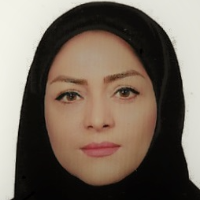Investigation of spatial ability of male and female students in 10th and 11th grade according to spatial visualization, mental rotation, and spatial orientation factors
In the turn of present century, dramatic changes have taken place in education and society. Among these changes, the change from an industrial to a knowledge-based society, the change from information technology and new information in various scientific fields, and the change in occupations can be mentioned. As a result, education has faced many shortcomings based on the level of the expectations of the society and its outputs. Due to the changes in the objective of the educational systems and the changes in the dimensions of people's lives, the teacher researcher paradigm has been considered by most teacher training systems in recent years, and that is why, it has led to some reforms in teacher training programs. The main and most important components of teacher training, curriculum, consists of goals, content, teaching method and evaluation. The present study explains the goals of the curriculum based on a teacher-researcher training at Farhangian University. The goals of the study are comprised of three areas of knowledge, competence, and attitude. According to the objectives of the study a mixed research method of the exploratory type was used which consists of two qualitative and quantitative stages. In the qualitative stage interpretive phenomenological method of data collection tool was used and In the quantitative stage, a descriptive survey method was utilized.
Inthe qualitative section, the research population comprised of the experts in the field of teacher training among which the appropriate instances were selected through targeted sampling and the required information was collected through a semi-structured interview. Theoretical saturation was achieved from interviews with 15 experts. In the analysis of the text of the interview the interpretive content analysis was used. To validate the data, credibility, transferability, reliability and validation were used. In the quantitative stage, the research population were the faculty members of different campuses of Farhangian University, among which four provinces were selected as the sample. The multi-stage cluster sampling method was used to select the sample and using Cochran's formula 274 people were selected among the faculty members of campuses and provincial centers. Data collection was done through a researcher-made questionnaire which was extracted from the qualitative part of the research. The data were analyzed by using a single sample T-test and Friedman test.
In this study, the goals of the curriculum were explained in terms of knowledge, ability and attitude. The results showed that the area of knowledge includes reflection, critical thinking, scientific expertise and research knowledge. The area of ability is comprised of the ability to perform research, to write, to be creative, to act systematically, to be independent and self-sufficient; and the area of the attitude includes interest in research and having no prejudice and stereotypes. The quantitative results of the study also showed that the components of attention and accuracy in relation to the issues of education in the field of knowledge, students' ability to self-assess; in the area of ability, and avoidance of prejudice and black and white thinking, and in the area of attitude received the most attention by the faculty members. There is clear evidence of a gap between the goals of the Farhangian University at the executive level in terms of knowledge, ability and attitude.
This study showed that the goals of the teacher taining curriculum need a general reformation at the executive level. It is important to pay attention to all areas of goals including knowledge, ability, and attitude and It is necessary to pay equal attention to all areas and to combine theoretical courses with the required practical work in teacher training programs.
-
The probability concept in elementary mathematics textbooks: An analytical look at the concepts and tasks' cognitive demand levels
Mojtaba Eskandari, *, Mehdi Izadi
Journal of New Approach to Children's Education, -
Metasynthesis in definitions and components of statistical thinking
Anahita Komeijani, *, , Ehsan Bahrami Samani
Andishe-ye Amari, -
An Analysis of Iranian Junior High School Mathematics Textbooks Based on Different Interpretations of Probability
Mojtaba Eskandari, *, , and Ehsan Bahrami Samani
Journal of Curriculum Research,




